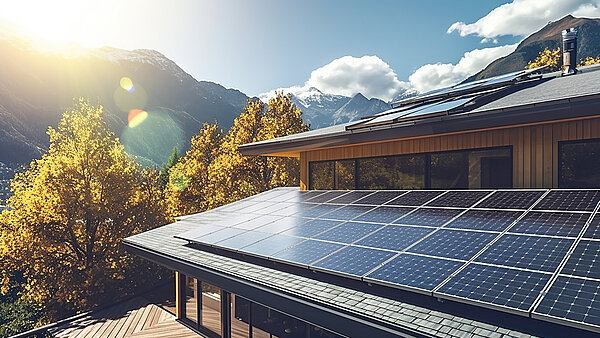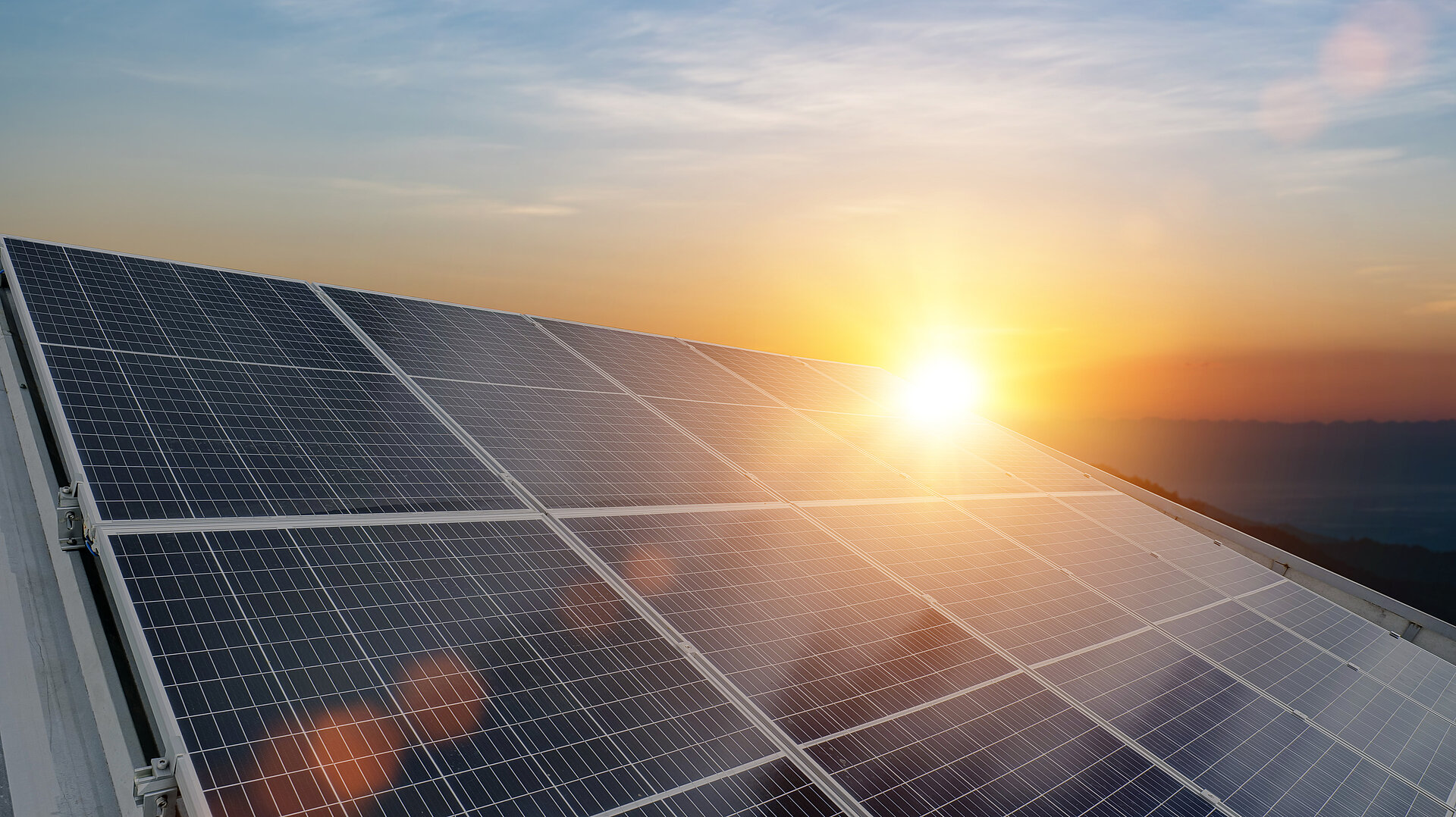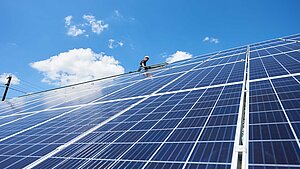In addition, your own PV system helps you to become more independent in terms of energy supply, and you thereby also make an important contribution to climate protection. And in the medium and long term you also save hard cash! But so that this success story really comes into being, as early as the planning phase of your PV system you should also create a professional safety concept, or get one created. This is the only way to define a fall protection system which is suitable for the actual circumstances, and which specifies not only the installation, but also makes the regular cleaning and servicing tasks on the system absolutely safe. The following tips show you what you need to look out for in this regard.
Tip 1: Include fall protection when you plan your PV system.
A suitable safety concept is essential so that people can be present safely on the roof and on the PV system. This is because you, as the owner of the building, are responsible that all tasks on your roof, i.e. also on your PV system, can be performed as a safely as possible, and that the fall risk is minimised. This means that if an incident occurs you can be made responsible for accidents and their consequences. Therefore rely exclusively on professional, reputable partnersfor the creation of the safety concept. This is the only way to exploit the roof surface optimally and at the same time to produce as much solar energy as possible.
Tip 2: Save money with the “right” fall protection for your PV system.
You save more when you choose a photovoltaic system with integrated fall protection. In contrast to normal fall protection systems, more roof surface is usable when the safety solution is installed directly on the substructure of the PV system. It then becomes possible to install more photovoltaic modules on the roof surface, because the roof area can be fully exploited right to the edge of the roof, and this in turn creates an improved return from the system. Expressed in numbers, by attaching the fall protection to the photovoltaic system, you can generate up to 40 % more power.
A further benefit is the access to the roof surface. By installing a professional safety solution, you can access the roof spontaneously at any time, but above all in safety, and you can clear leaves, snow, or dirt from the solar panels. In this way, you enormously increase the performance of the system and ensure that it always delivers the maximum output – and that in turn naturally has a positive effect on your costs. In terms of costs, also pay attention to the selection of the “right” fall protection. There is a wide range of safety solutions on the market, from very varied manufacturers. However, each and every safety system has different strengths and weaknesses. With professional advice and support, you will find the right fall protection system for your solar power plant on the roof. In separate blog posts, we have already described solutions for photovoltaic systems on flat and pitched roofs.
Tip 3: Keep an eye on the costs.
One thing can be said from the start. In terms of costs, the following rule of thumb applies: “The bigger the roof surface, the lower the costs of fall protection relative to the costs of the PV system itself”. Depending on the size of the PV system and the roof surface, the roof type and pitch, the roof substructure, the timepoint of planning, etc., your fall protection system for a photovoltaic system on a roof will vary, and so will its costs. In order to give you an impression of the costs in this area for a professional fall protection system, we have created 3 sample calculations/scenarios for you. For this, we have used a roof surface of 240 m² as a basis.
Scenario 1: Planning an integrated “AIO” fall protection system for your PV system with the assistance of an expert or installer/solar technician from the very start.
We assume that you are interested in a photovoltaic system on your roof which has an output of approx. 25 kWp. This corresponds to an approximate cost of 20,000 to 25,000 euros for the PV system. Having previously consulted with your installer, solar technician, or INNOTECH expert, you have decided to install the AIO lifeline system, which is attached directly to the PV substructure. In this case, the costs for the safety solution are about 10% of the value of the planned PV system. The costs of the fall protection system in the form of the AIO lifeline system would then be about 2,200 euros.
Scenario 2: Planning integrated “TAURUS” fall protection for your PV system with the assistance of an expert or installer/solar technician from the very start.
You are still interested in the photovoltaic system described above. Because of the local circumstances, such as using the roof surface right to the roof edge, or the simultaneous protection of vertical access to the roof, plus securing the PV system, only the TAURUS rail system comes into consideration for you as fall protection. In this case, for your safety solution you must allow around 25% of the value of the photovoltaic system, and this would correspond to about 5,500 euros (please note that the costs relate only to protection of the PV system on the roof).
Scenario 3: Planning a “normal” fall protection system.
In our third scenario, you are not planning the fall protection system with the solar technician or installer from the very outset, but instead you give the order to another type of provider. A “normal” safety system for protecting against falls, suitable for the roof area, is thus planned. Here, this is a lifeline system. Because the lifeline system is not installed directly onto the onsite PV substructure, it is not possible to equip the whole of the roof area with PV modules. This in turn means that certain PV modules will have to be omitted. The consequence of this on the one hand is a smaller PV system on the roof and, on the other hand, reduced output resulting from this. The overall costs for such a photovoltaic system amount to about 12,000 to 15,000 euros. Because the output from the PV system is reduced, the costs are also less. The costs also depend on the installation variant. For a variant attached to the roof cladding, costs of 35% of the value of the PV system can be expected, and without roof penetration costs will be 45% of the value. This comes to between 4,000 and 6,000 euros for the fall protection system.
Tip 4: “Return on Prevention” – prevention spares the nerves and saves money.
A professional, permanently installed fall protection system pays for itself in any case! The costs of planning and installation change nothing at all in this regard, because viewed in the long term, significant benefits result for companies, according to the DGUV report “Return on Prevention”. According to the report, the annual costs of appropriate preventive measures amount to 1,200 euros per employee on average – compared with a benefit of 2,645 euros. That difference still adds up to 1,445 euros per employee. AUVA also comes to a similar conclusion, and calculates the financial damages from falls or breakthroughs to be about 2,500 euros. That can be prevented if a professional fall protection system is used!
But, in addition to the direct financial losses, in most cases such accidents result in severe injuries – and sometimes even in death. For companies, this means the absence of the injured employee, potential overtime for the rest of the team, and even some production outages. In addition, companies who ensure the unconditional safety of their workers are perceived to be responsible and socially committed employers. Below the bottom line, this creates a significantly better image in comparison with those companies who tend to be lax in this regard, to say nothing of all the legal consequences of potentially negligent conduct with respect to employees. Even a suspicion in this regard can be very unpleasant.
Tip 5: It is never too late for a professional fall protection system.
And finally, a short but very important tip: If you already have a PV system on your roof, and it has no professional, permanently installed fall protection system, then do something about it as soon as possible. Because, although temporary or home-made safety solutions may be cheaper to procure, in the long term they certainly prove to be more expensive, because sometimes only an emergency demonstrates how safe the system really is. In addition, experience continues to demonstrate that important cleaning and servicing tasks are postponed or not performed regularly, because the safety-related preparations can be very laborious, depending on the system. A professional, permanently installed fall protection system is always available, and allows work to be performed on the roof or PV system whenever required. This means that the solar system also runs much more efficiently and produces more power. And in the long term that is hard cash!
Summary
A PV system on your roof is a good plan! This plan is made even better by the timely integration of a safety concept into the project. And “timely” means right at the start! This allows you not only to significantly increase the efficiency of your PV system, but also to save money and spare your nerves. Have you any questions about planning your PV system and including a professional safety concept? Then contact us right now! The INNOTECH experts will be pleased to help and advise you! Don't miss our brand new factsheet about this topic!








![[Translate to Englisch:] [Translate to Englisch:]](https://www.innotech-safety.com/fileadmin/_processed_/1/a/csm_Mehrere_PV-Kunden_gleichzeitig_betreuen__kann_oft_zur_Riesenherausforderung_werden-header_c1a520d846.jpg)






















